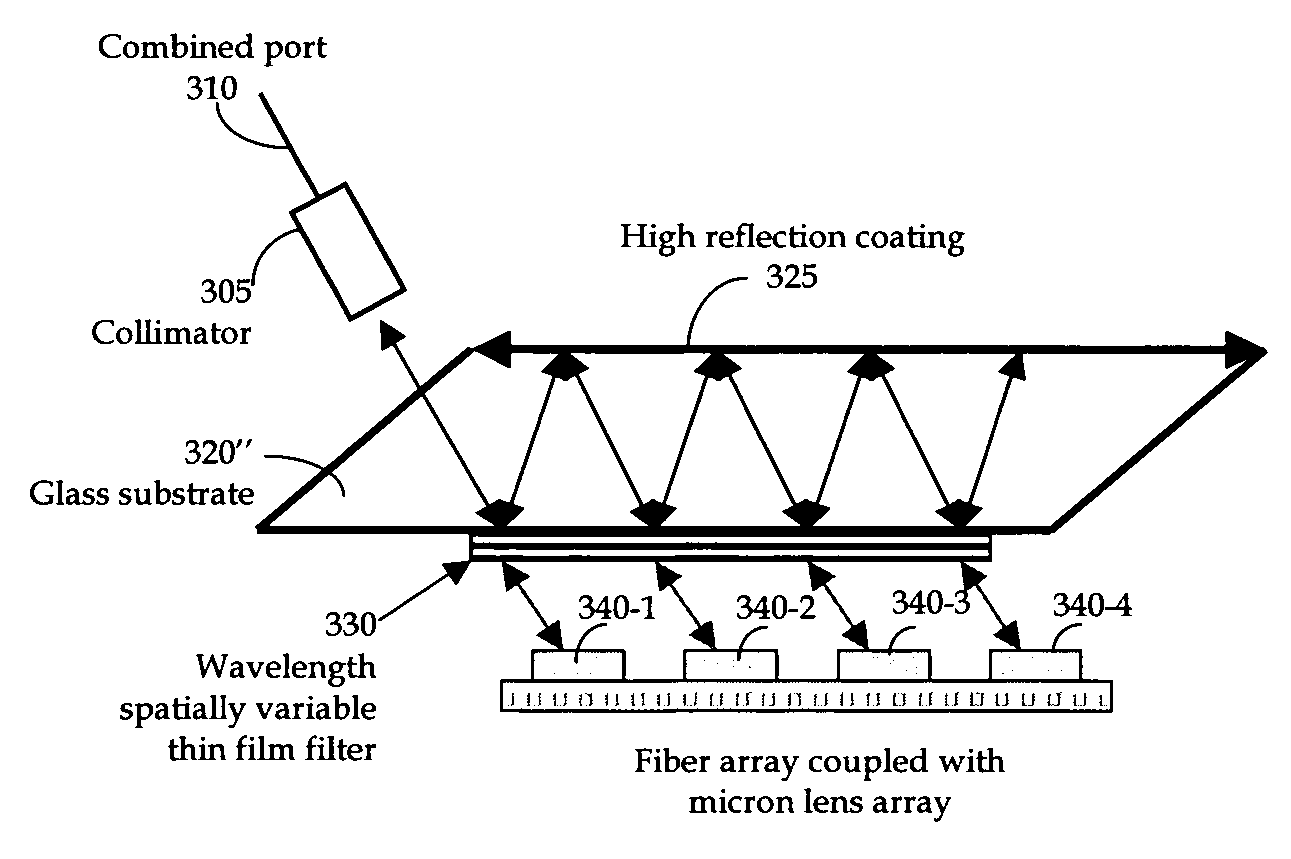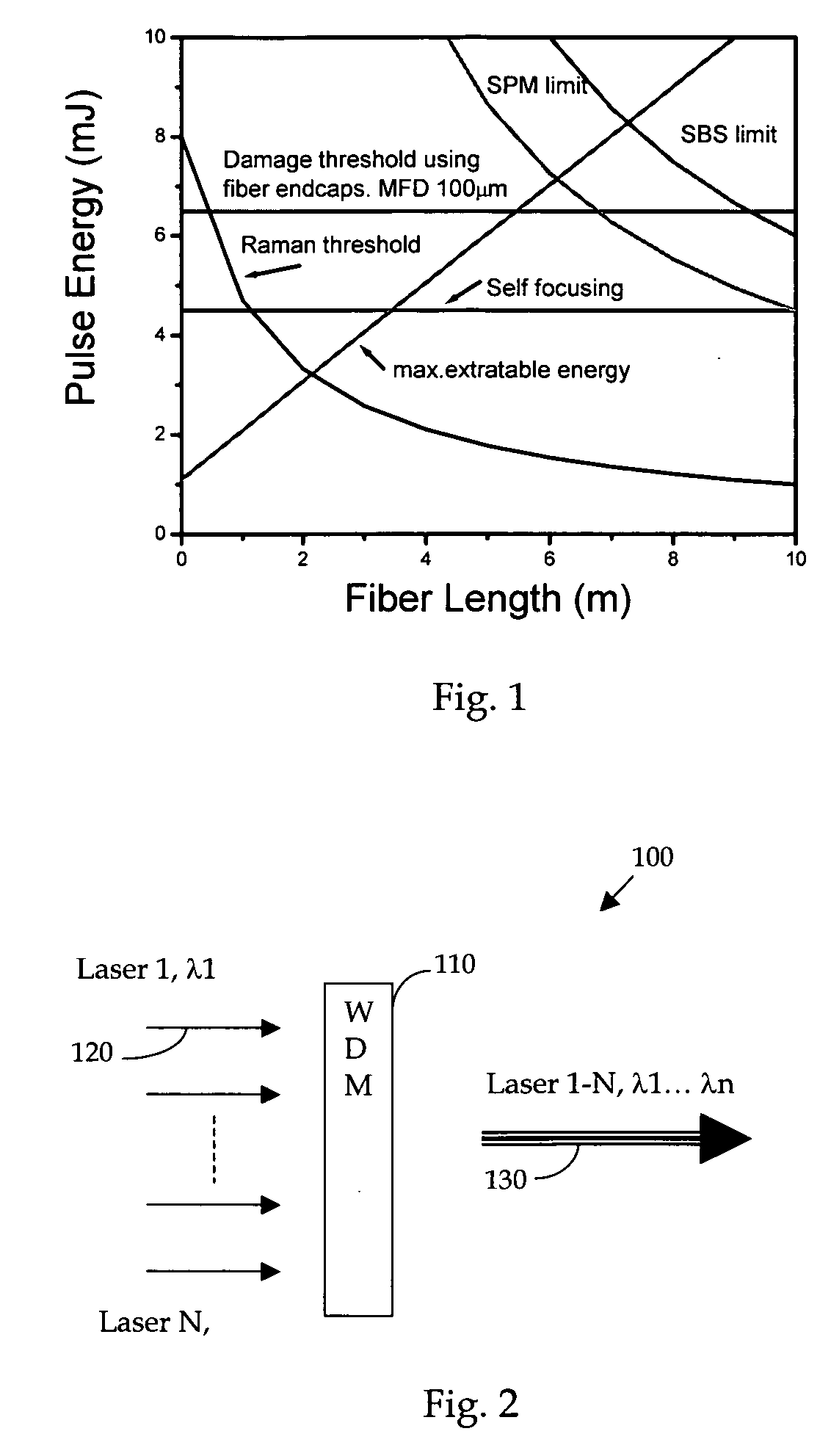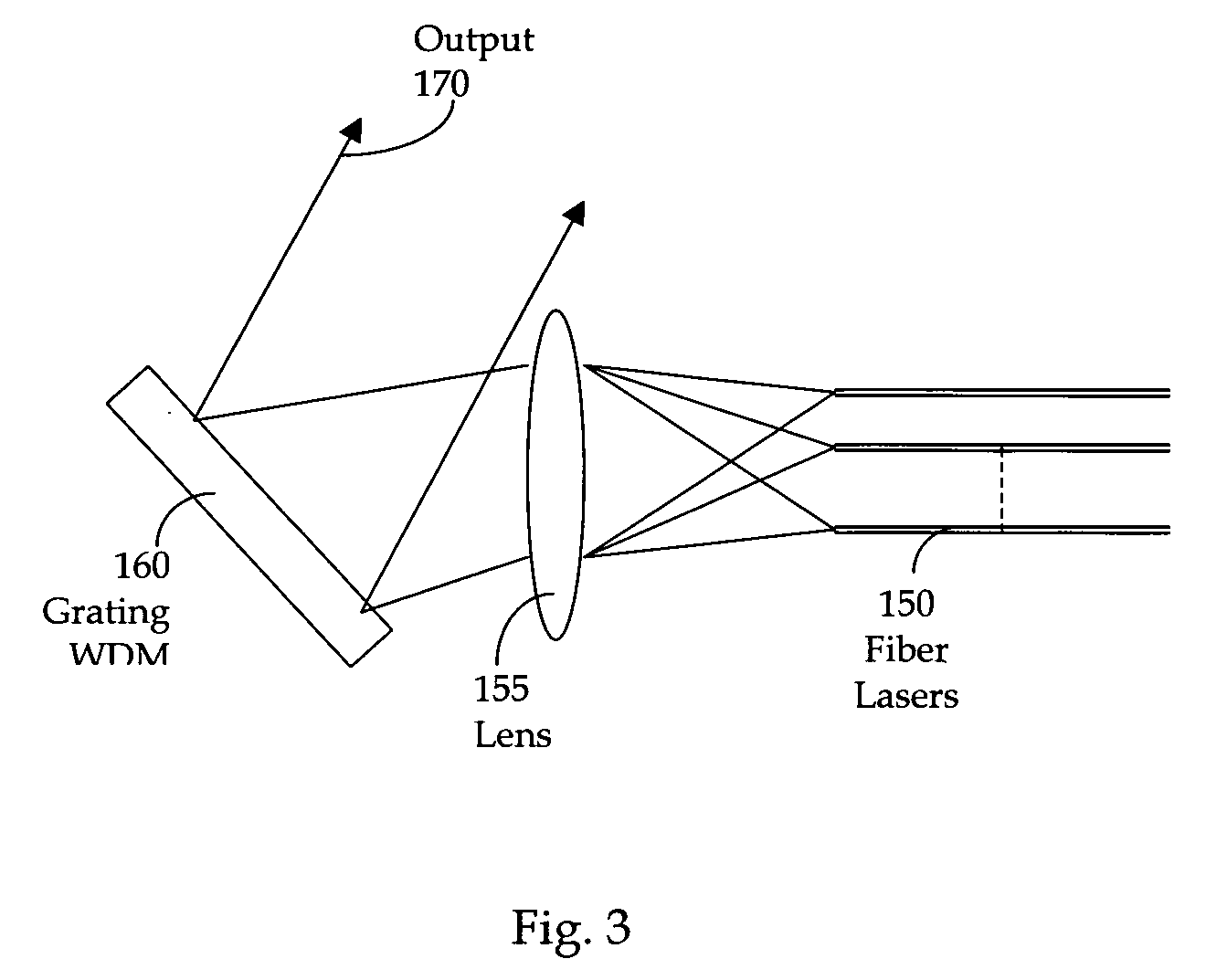Power and energy scaling of fiber lasers by using compact divisional wavelength multiplexing (WDM) devices
a technology of fiber lasers and wavelength multiplexing, which is applied in the field of power and energy scaling of fiber lasers by using compact divisional wavelength multiplexing devices, can solve the problems of power scaling, hindering the usefulness of fiber lasers, and scaling the power/energy of laser sources, and achieves convenient implementation.
- Summary
- Abstract
- Description
- Claims
- Application Information
AI Technical Summary
Benefits of technology
Problems solved by technology
Method used
Image
Examples
Embodiment Construction
[0022] Referring to FIG. 2 for a schematic diagram of a fiber laser system 100 of this invention to further scale the power / energy of the laser system. The technique employed in the laser system 100 for scaling the power / energy is to implement a wavelength division-multiplexing (WDM) device 110 in the laser system. The WDM device 110 is employed to control the combinations of different portions of incident optical beams 120 each having a different wavelength to generate a multiplexed output optical beam 130 that can be scaled according to a combination of optical projection of different wavelength represented by λ1, λ2, λ3, . . . . λn. The WDM device 110 may be a multiplexing device as further described in FIGS. 5 to 7 below. As shown in FIG. 2, by applying a WDM technique, the energy / power from different fiber lasers 120 shown as λ1, λ2, λ3, . . . λn, with equal or unequal spectral spacing is coupled from a couple of times from two lasers to tens or hundred times to scale the energ...
PUM
 Login to View More
Login to View More Abstract
Description
Claims
Application Information
 Login to View More
Login to View More - R&D
- Intellectual Property
- Life Sciences
- Materials
- Tech Scout
- Unparalleled Data Quality
- Higher Quality Content
- 60% Fewer Hallucinations
Browse by: Latest US Patents, China's latest patents, Technical Efficacy Thesaurus, Application Domain, Technology Topic, Popular Technical Reports.
© 2025 PatSnap. All rights reserved.Legal|Privacy policy|Modern Slavery Act Transparency Statement|Sitemap|About US| Contact US: help@patsnap.com



